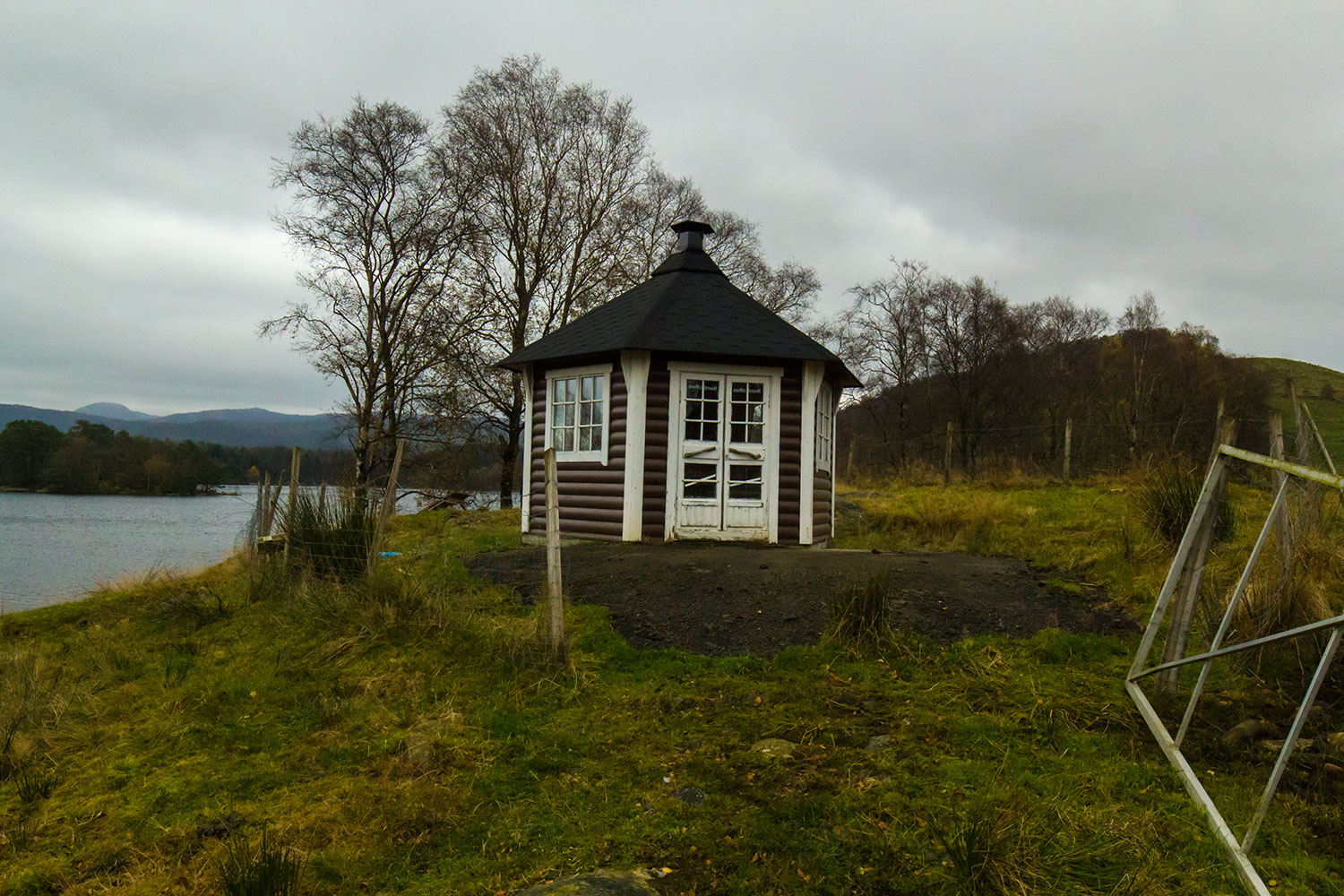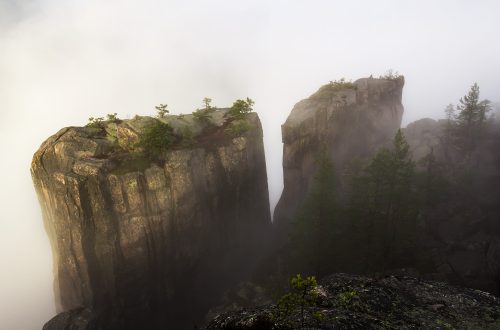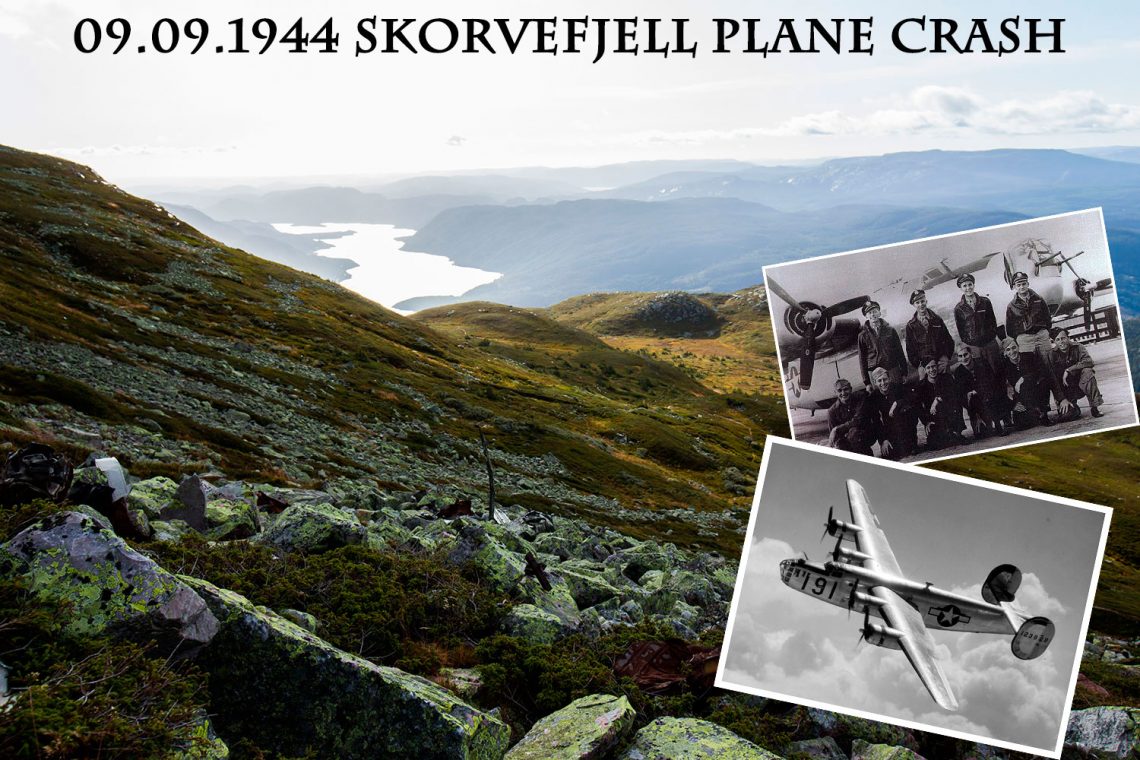
Skorve – Flyvrak
O wejściu na Skorve zdecydowały głównie warunki atmosferyczne. Przez zachodnie wybrzeże Norwegii przechodził akurat orkan, niosąc ze sobą porywisty wiatr i ulewy. Moje plany związane z wejściem na którąś z górek w tamtym rejonie musiałem przesunąć na bliżej nieokreśloną przyszłość. Pojawiła się za to szansa, na eksplorację innych terenów i tak padło na Seljord. Prognozy nie przewidywały żadnych opadów w tej właśnie okolicy a jedynie silny wiatr.
O szczątkach amerykańskiego samolotu, roztrzaskanego o zbocze góry w 1944 roku wyczytałem w internecie jeszcze przed wyprawą, nie było więc dla mnie zaskoczeniem, gdy natknąłem się na rozwidlenie szlaków niedaleko szczytu Gøysen i ścieżkę prowadzącą na miejsce katastrofy. Na dotarcie na miejsce potrzebowałem może ze 30 minut. Początkowo dojrzałem pojedynczą blachę, potem jakieś dwie inne części. W końcu, odnalazłem tablicę pamiątkową i całą masę szczątków rozsianych po zboczu.
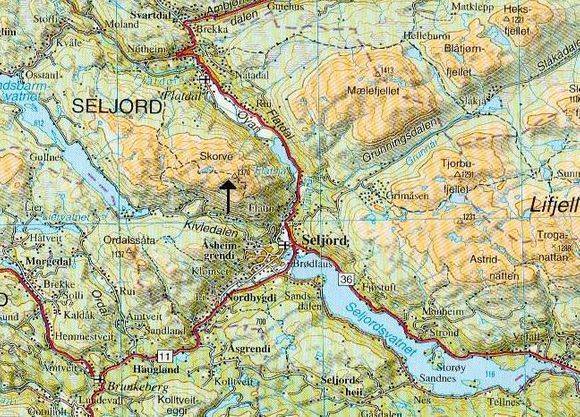
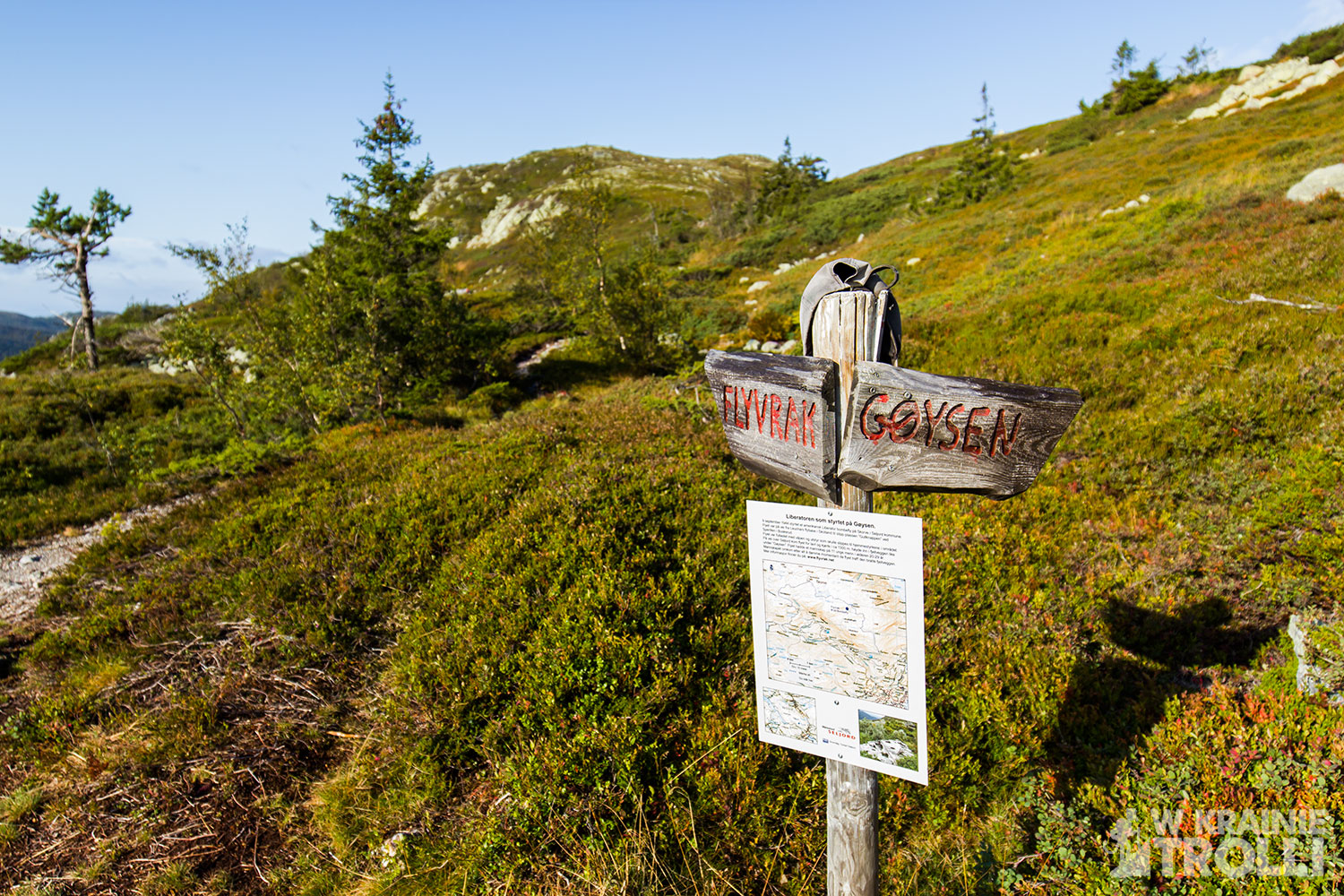


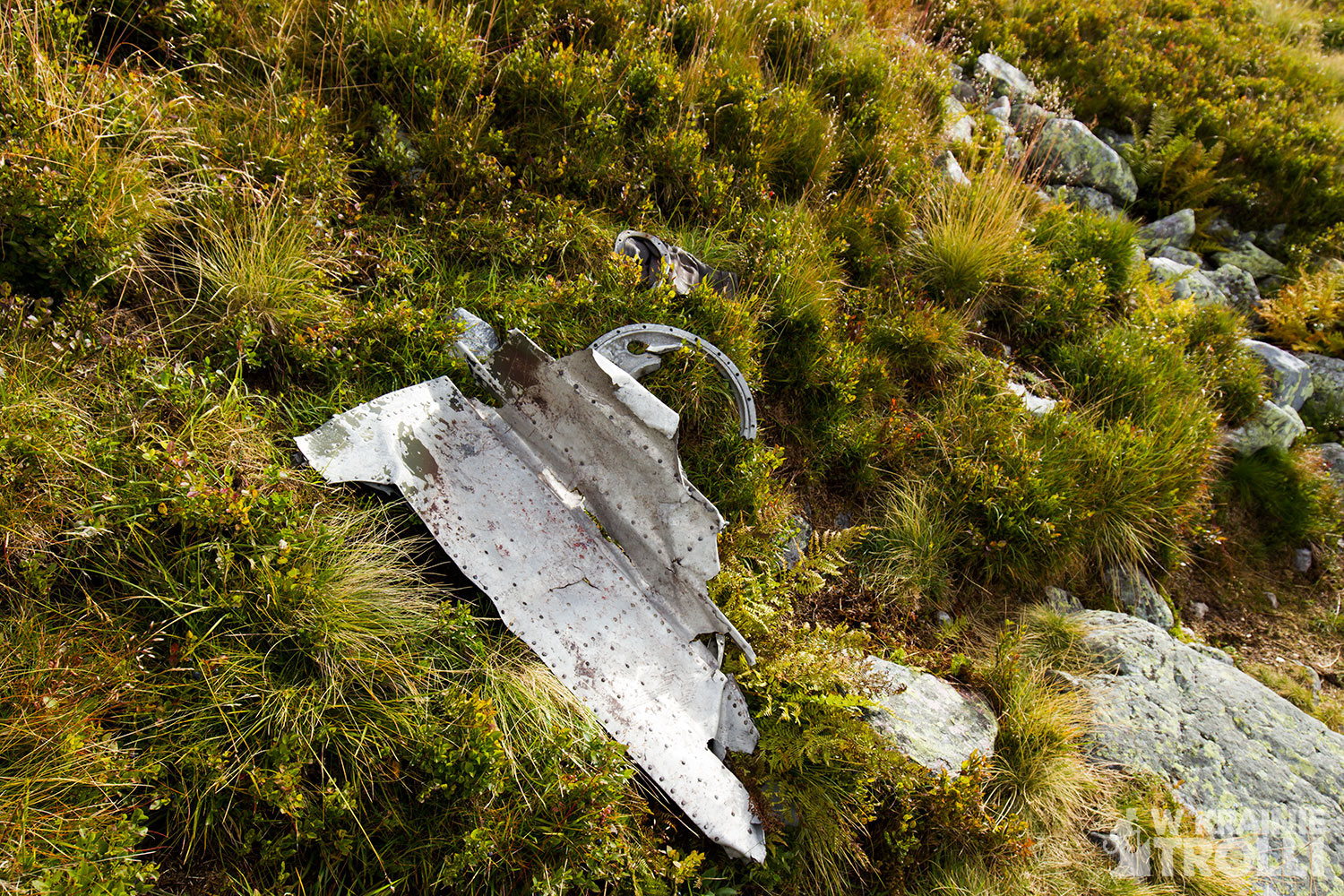

Tragedia rozegrała się 9 września 1944 roku w okupowanej Norwegii. Liberator B-24H-10/11 był w drodze ze Szkocji na punkt zrzutu D14.2 w okolicy jeziora Sperillen w gminie Buskerud, gdzie miał za zadanie dostarczyć pojemniki z bronią miejscowej siatce ruchu oporu. Leciał na pułapie około 1300 metrów w trudnych warunkach atmosferycznych i pilot zapewne nie zauważył zbocza góry Skorve, które nagle wyrosło tuż przed nim. Liberator roztrzaskał się o potężny masyw skalny góujący nad masteczkiem Seljord. Jedenastoosobowa załoga zginęła na miejscu.
Specjalną grupę sześciu zmodyfikowanych bombowców B-24 Liberator pod dowództwem norweskiego pułkownika Bernta Balchena utworzono w lipcu 1944 roku. Miała ona wspierać lokalne jednostki norweskiego ruchu oporu, zrzucając im podczas nocnych lotów zapasy broni i sprzętu. Bazą wypadową grupy było Leuchar w Szkocji a całą akcję ochrzczono ”Operacją Ball”. Trwała ona od 17 lipca do 27 września 1944 roku. W tym czasie zdołano dostarczyć 120 ton ładunków dla norweskich partyzantów, mimo że jedynie 37 z 65 misji zakończyło się sukcesem.
Liberatory biorące udział w Operacji Ball zostały specjalnie przystosowane do zadań, jakie miały spełniać. Przede wszystkim zmniejszono masę maszyn, aby mogły one zwiększyć ładowność i umożliwić osiąganie wyższych prędkości. Usunięto między innymi gondole karabinów maszynowych na dziobie, dzięki czemu uzyskano powiększony zakres widoczności, przydatny podczas nocnych lotów i przy wypatrywaniu punktów orientacyjnych. Zamiast gondoli karabinu maszynowego na spodzie maszyny, pozostawiono otwór przykrywany płytą wiórową (tzw. Joe hole), służący do zrzucania spadochroniarzy i pojemników z bronią, amunicją, materiałami wybuchowymi i innym sprzętem. Joe (Jane lub Josephine w przypadku kobiet) był potocznym kryptonimem agentów OSS (Office of Strategic Services) przerzucanych za linię wroga. Aby odchudzić jak najbardziej samoloty rezygnowano z instalacji tlenowej, potrzebnej załodze na dużych wysokościach. Pozostawiono gondole karabinów maszynowych na ogonie, w celu zapewnienia ochrony przed niemieckimi samolotami. Żeby zwiększyć zasięg, zainstalowano dodatkowe zbiorniki paliwa. Przemalowano maszyny na matowy, czarny kolor, aby utrudnić wykrycie ich w ciemnościach a na rurach wydechowych silników zamontowano tłumiki płomieni. Podobne tłumiki zainstalowano na karabinach maszynowych.
Samolot, który rozbił się o zbocze Skorve nosił oznaczenie B-24H-10-FO. Został zbudowany w 1942 roku w fabryce Willow Run przez Ford Motor Company w stanie Michigan w USA. Wyposażono go w 4 silniki Pratt & Whitney R-1830-65 o mocy 1200 KM każdy. Standardowy Liberator miał zasięg 3700 km, prędkość przelotową 346 km/h i prędkość maksymalną 487 km/h. Długość samolotu wynosiła około 20m a rozpiętość skrzydeł 33,5m.
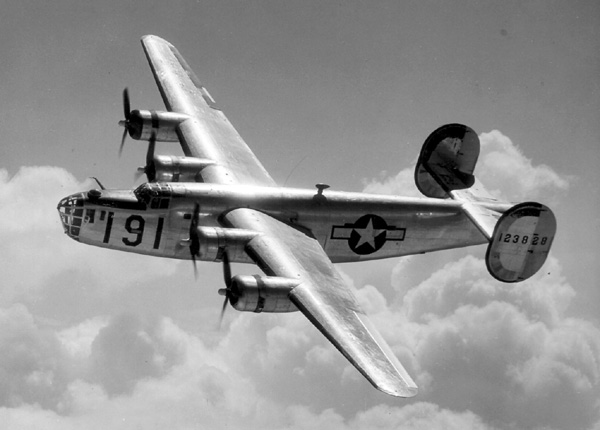
Początkowo maszyna służyła w 453 grupy bombowców, 734 dywizjonu bombowego USA Air Force. Nadano jej przydomek ‘’War Bride’’. Od 17 lipca 1944 roku samolot przeszedł do służby American Air Transport Service (AATS), która była przykrywką dla operacji specjalnych OSS.
Załogą ‘’War Bride’’ dowodził 22-letni John B. O’Hara, mając pod sobą 9-osobową załogę. W sobotę, 9 września 1944 roku, otrzymali zadanie zrzutu ładunków z bronią i wyposażeniem dla ‘’chłopaków z lasu’’, jak często określali partyzantów norweskiego ruchu oporu. Punkt zrzutu znajdował się w miejscu o nazwie Gullknappen na zachód od Sperillen w gminie Buskerud. Punkt ten określono jako D14.2. W 12 cylindrycznych pojemnikach wyposażonych w spadochrony miały znaleźć się broń, amunicja, granaty ręczne, materiały wybuchowe i żywość. Prognozy zapowiadały deszcz i mgłę, co było o tyle dobrą wiadomością, że istniało duże prawdopodobieństwo na uniknięcie patroli niemieckich myśliwców.
W ostatniej chwili do załogi dołączył sierżant John P. Morris (strzelec pokładowy), który zgłosił się na ochotnika, chcąc jak najszybciej mieć za sobą 35 misji bojowych, jakie każdy z pilotów musiał odbyć aby zakończyć służbę. Pozostałą część załogi stanowili: Delbert E. McCrary (drugi pilot), Lewis T. Bambick (nawigator), Paul Bloomberg (bombardier), Bernard F. Gittelman (radio operator), Robert T. Finn (inżynier lotu), Frank G. Felthouse (strzelec pokładowy), Norman J. McLaughlin (strzelec pokładowy), Wesley C. Bowman (strzelec pokładowy), Robert D. Bourquin (strzelec pokładowy). Misja zyskała nazwę kryptonim Crupper-5.
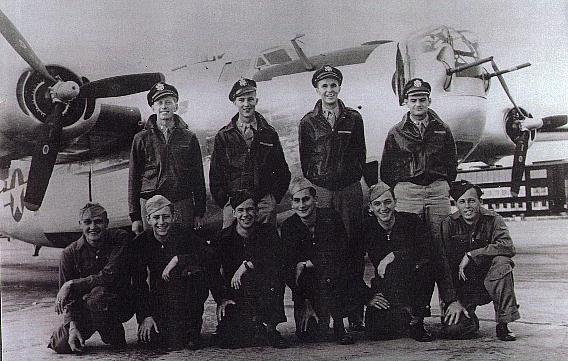
Bliższy rząd od lewej:| Closest row from the left: Sergeant Frank G. Felthouse, 21 years old, gunman; Sergeant Normann J. McLaughlin, 20 years old, gunman; Sergeant Robert T. Finn, 23 years old, flight engineer; Sergeant Bernard F. Gittelman, 23 years old, radio operator; Sergeant Wesley C. Bowman, 22 years old, gunman; Sergeant Hubert D. Bourquin, 29 years old, gunman.
Z tyłu od lewej stoją: |Rear row from the left: junior officer Lewis T. Bambick, 26 years old, navigator; junior officer Delbert E. McCrary, 24 years old, 2nd pilot; junior officer John B. O’Hara, 22 years old, 1st pilot (commander/captain); junior officer Paul Bloomberg, 24 years old, bomber.
Sierżant John P. Morris nie był obecny podczas wykonywania tego zdjęcia. |Staff Sergeant John P. Morris, 22 years old, was not present when the picture was taken.
Nie jest jasne jak doszło do katastrofy. Prawdopodobnie z uwagi na warunki atmosferyczne, na skrzydłach, śmigłach i kadłubie zaczął osadzać się lód, zwiększając masę samolotu. Być może przez to pilot nie był w stanie utrzymać wystarczającej wysokości. Być może oblodzeniu uległy stery wysokości, sprowadzając samolot na niższy pułap. A może O’Hara zdecydował się na obniżenie lotu, chcąc znaleźć obszar cieplejszego powietrza, aby pozbyć się lodu ze skrzydeł. Mógł w tym celu wznieść się wyżej, ale biorąc pod uwagę brak instalacji tlenowej, potrzebnej na wyższych wysokościach byłoby to równie ryzykowne. Możliwe także, że zawiodły przyrządy, co w połączeniu ze słabą widocznością mogło doprowadzić do katastrofy. Prawdziwej przyczyny zapewne nie poznamy nigdy.
Kiedy między godziną 8-mą a 9-tą wieczorem Crupper-5 wleciał w zbocze Skorve, potężny huk i błysk towarzyszący eksplozji zaalarmowały okolicznych mieszkańców. Szybko zorientowano się, co się stało. Cała 11-osobowa załoga zginęła na miejscu. Pochowano ich w zbiorowym grobie niedaleko miejsca katastrofy. Zapasy, które miały być zrzucone partyzantom, skonfiskowali Niemcy.
Ciekawostką jest fakt, że zaledwie miesiąc później na zboczu sąsiedniej góry (Hestenutan), roztrzaskał się kolejny samolot. Tym razem był to niemiecki samolot pasażerski Junkers Ju52-3m z 12 pasażerami i 3 członkami załogi. Wszyscy zginęli na miejscu.

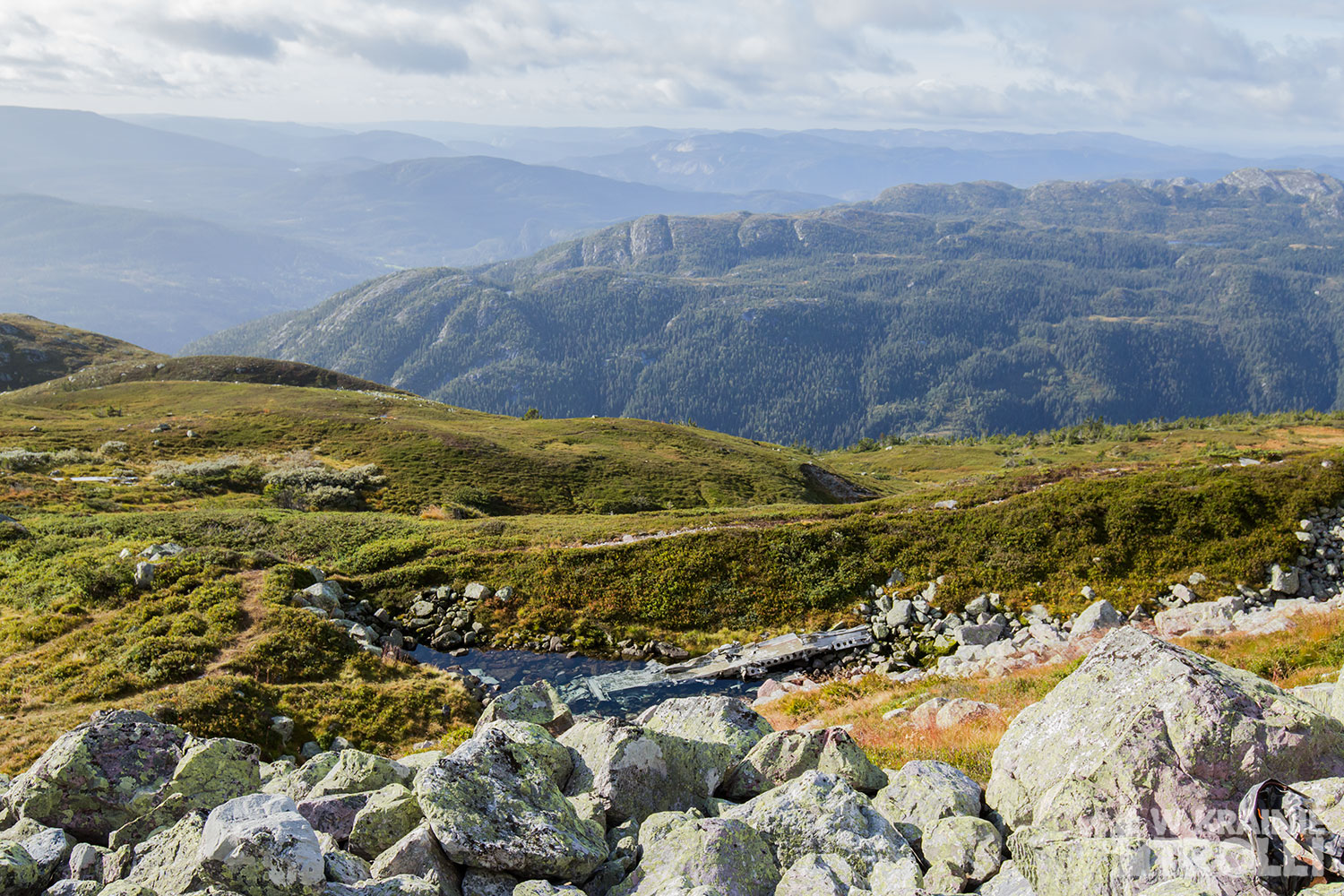
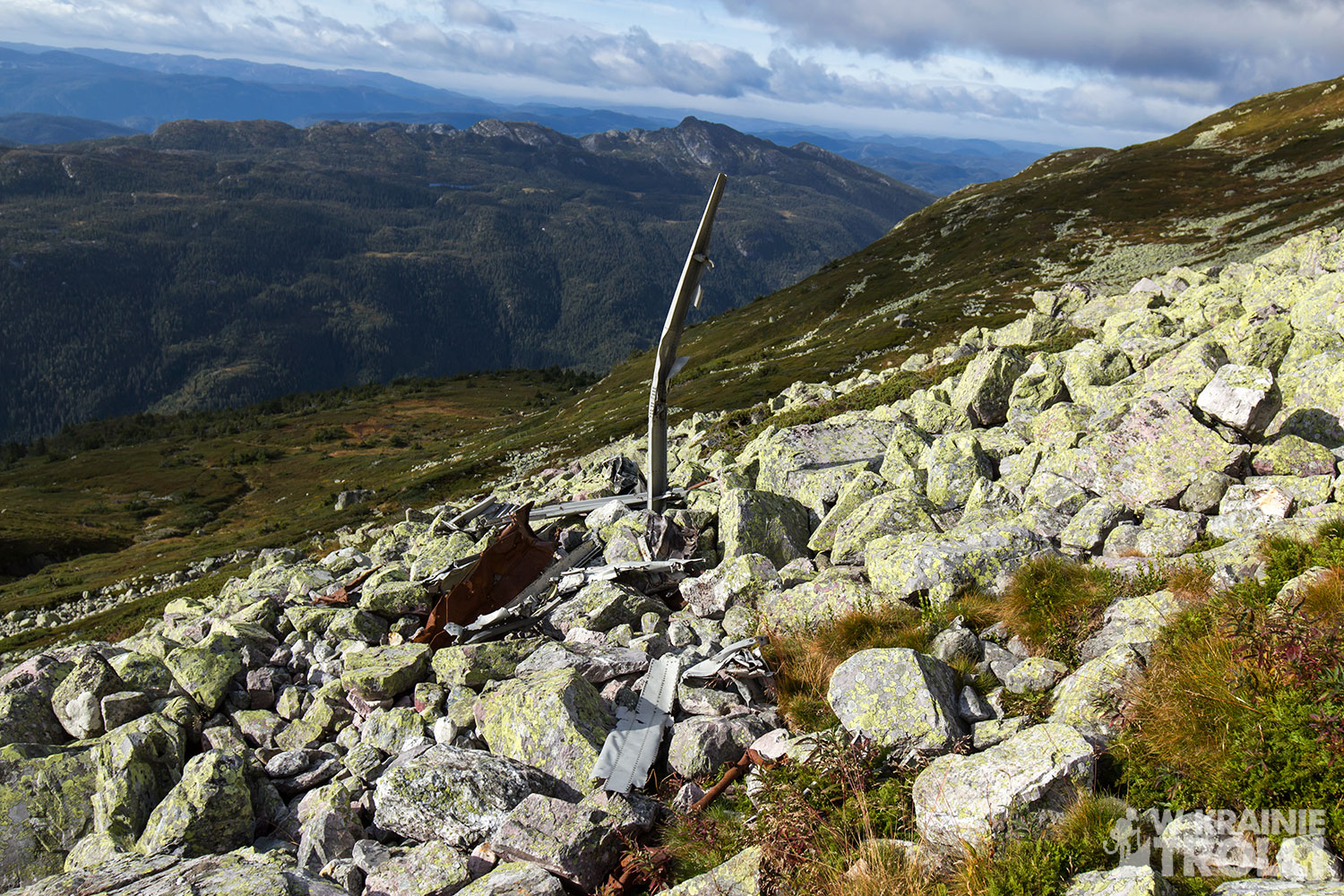

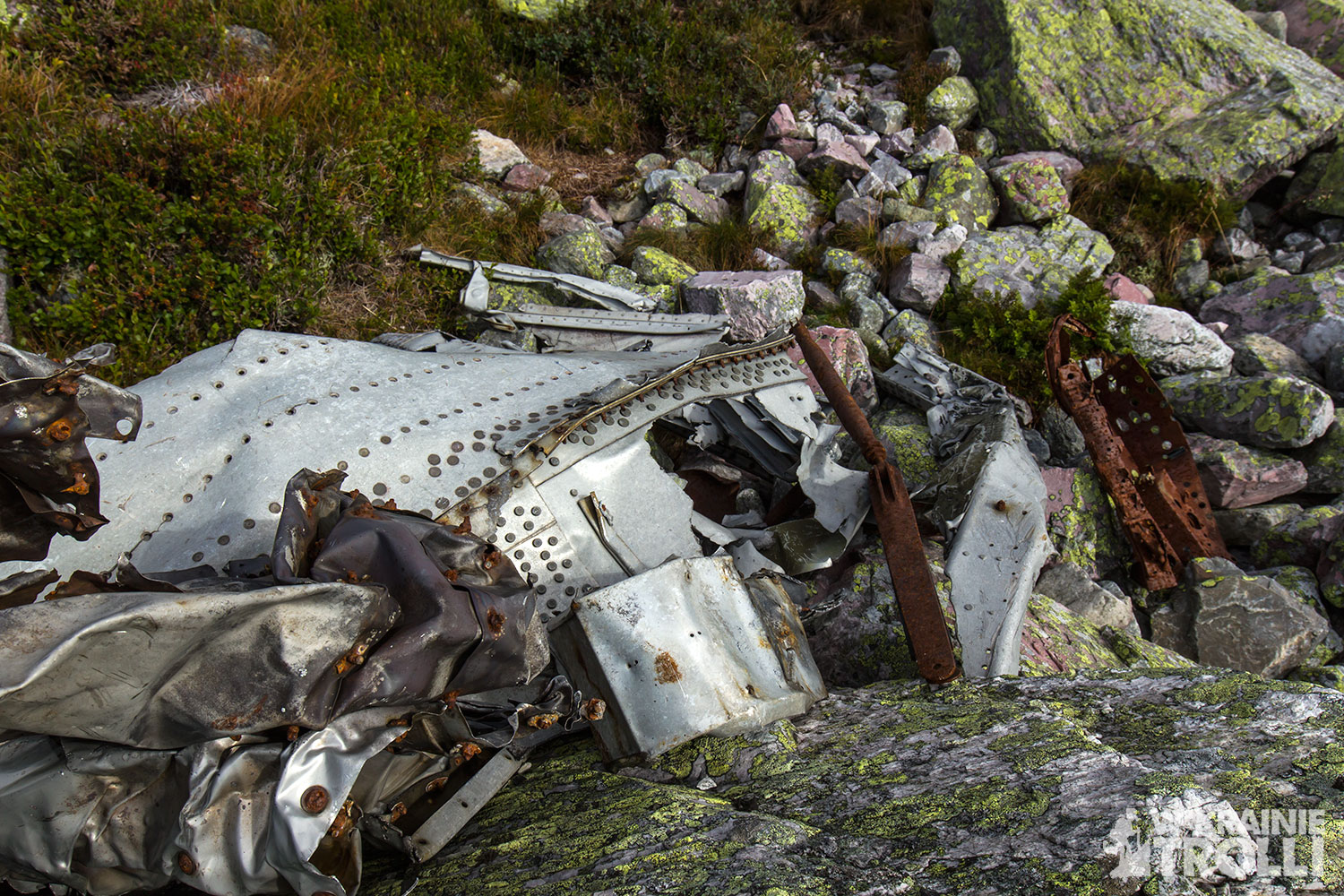

Po zakończeniu wojny załogę przeniesiono na cmentarz wojenny „Neuville-en-Condroz” w Belgii, a w 1950 roku, wrócili do ojczyzny, gdzie spoczęli na Narodowym Cmentarzu Wojennym Jefferson Barracks w St. Louis w stanie Missouri.
W 1994 roku postawiono w Seljord monument upamiętniający tragiczny lot B-24, a na miejscu katastrofy umieszczono pamiątkową tablicę ku czci 11 amerykańskich lotników, którzy stracili życie 50 lat wcześniej. Na tablicy znajduje się wiersz Aslauga Hødala:
Spoczywaj w pokoju na norweskiej ziemi.
Spoczywaj w pokoju, który leczy wrzos.
Spoczywaj w pokoju w Mosamyr.
Spoczywaj w pokoju aż do świtu.
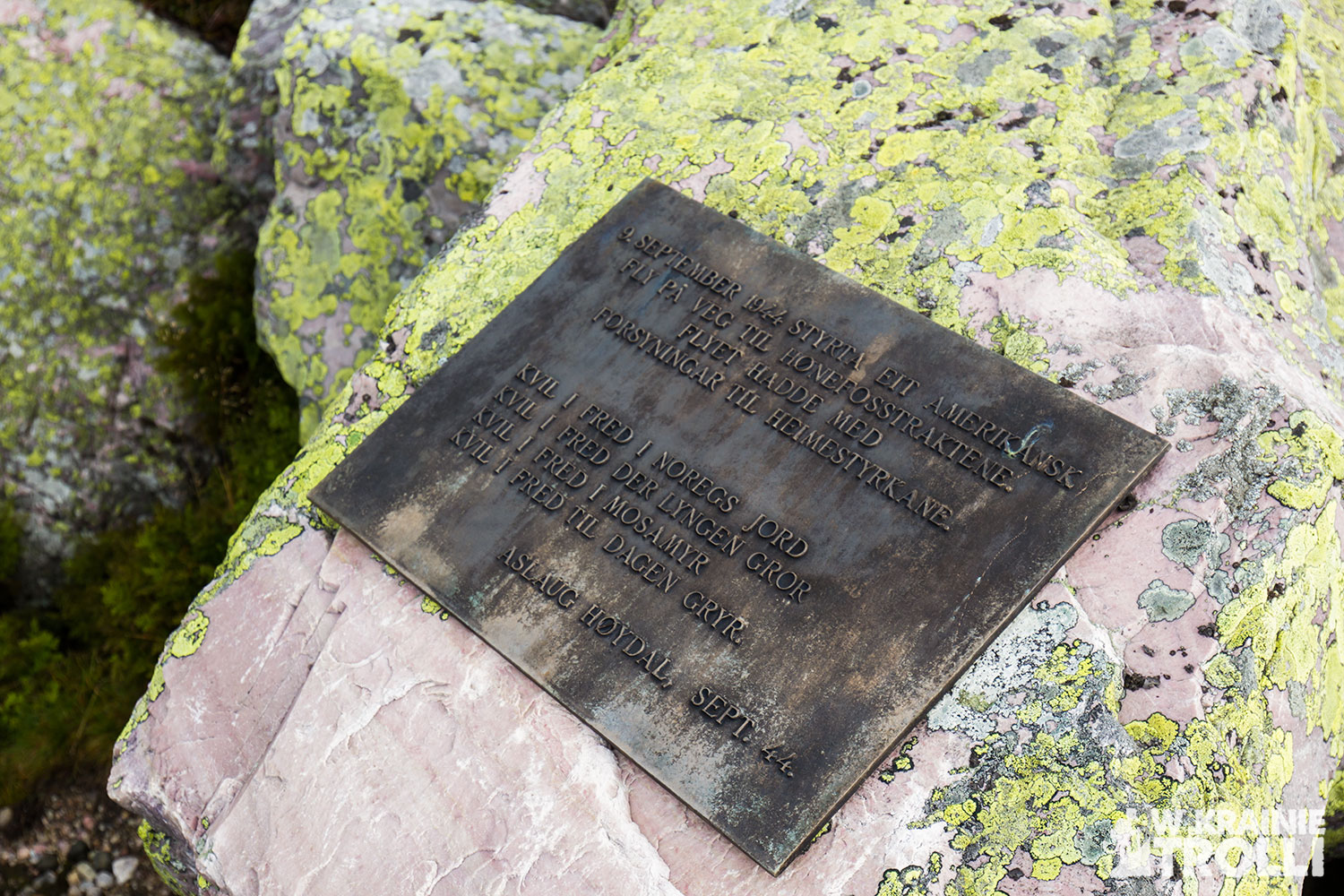
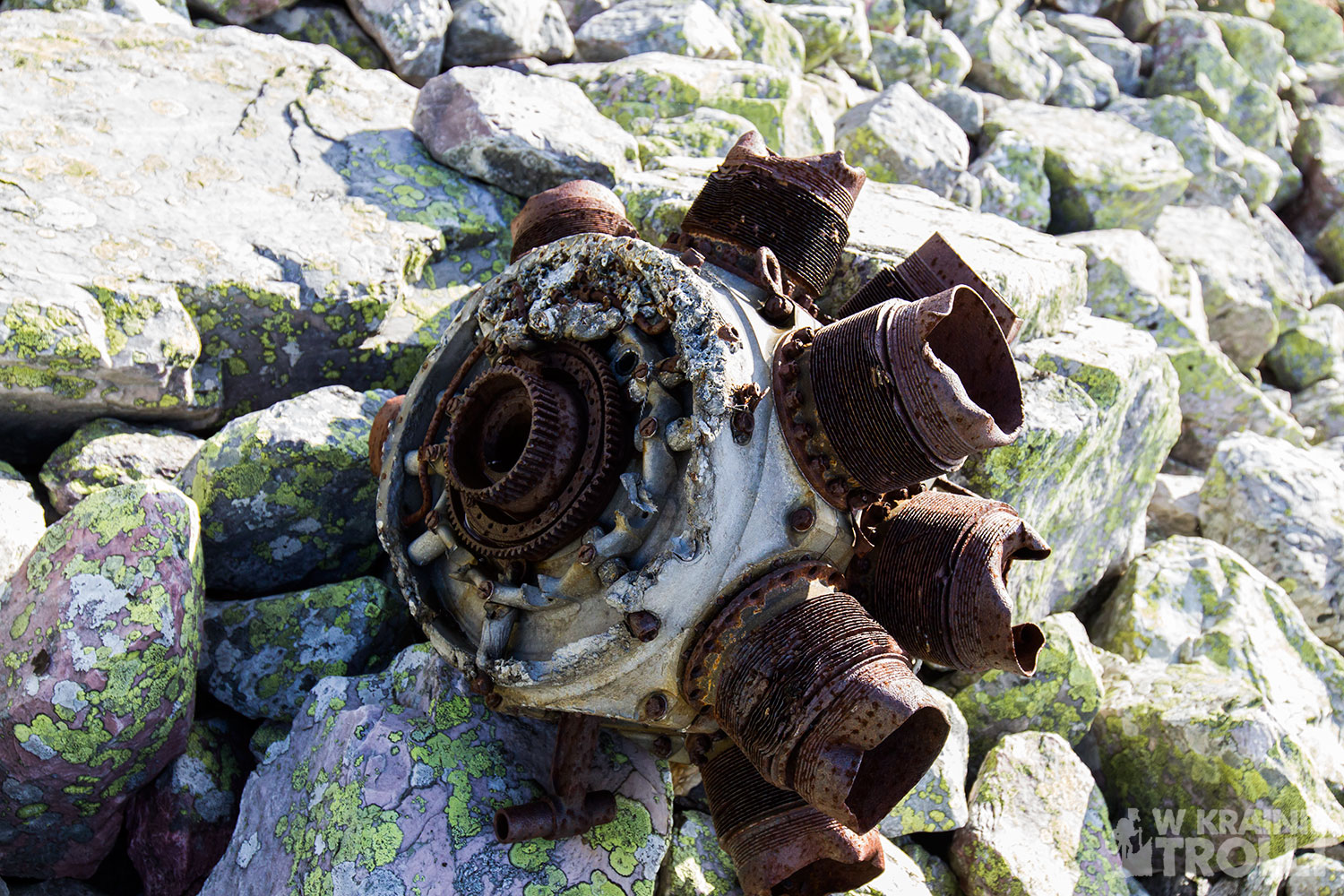
Hiking on Skorve has been decided according to the weather conditions. On the western coast of Norway there was hurricane appeared, carrying the wind and rain. My plans for walking somewhere in that area had to be moved to a more undetermined future. There was a chance for explore other terrain and that’s why I ended up in Seljord. Forecasts did not predict any rain in this area, only a strong wind.
About the remains of the American aircraft, a crashed on the slope of the mountain in 1944 I read on the internet before the trip, so it was not surprising when I stumbled on the trail near the Summit of Gøysen leading to the disaster site. I needed perhaps 30 minutes to reach the place. When I get there, I found a lot of plane parts scattered across the slope of mountain.

The tragedy took place on September 9, 1944. Liberator B-24H-10 /11 was on his way from Scotland to the drop zone D 14.2 in the area of Sperillen in the municipality of Buskerud, where he was tasked with supplying containers for local resistance. He flew at height of about 1300 meters and the pilot probably did not notice the wall of Skorve mountain, which suddenly appeared right in front of him. The Liberator was crashed on the mighty rock massif. The eleven-person crew died at place.
A special group of six modified bombers B-24 Liberator under the command of Norwegian colonel Bernt Balchen was established in July 1944. It was supposed to support the local units of the Norwegian resistance, dropping weapons and equipment during night flights. The base of the group was Leuchar in Scotland and the whole action was called ‘’Operation Ball’’. It lasted from July 17 to September 27, 1944. At that time, they were able to deliver 120 tons of equipment, but only 37 of the 65 missions were successful.
Liberators featured in Operation Ball were specially adapted to the tasks they were supposed to do. Most of all, the weight of the machines has been reduced so that they can increase payload and allow higher speeds. Among other things, the machine gun on the bow were removed, giving instead an enlarged range of visibility, useful during night flights and when looking at landmark points. The ball turret on the bottom, replaced by a hatch so-called Joe hole, used to dump paratroopers and containers with weapons, ammunition, explosives and other equipment. Joe (Jane or Josephine for women) was a codename of OSS Agents (Office of Strategic Services) dropped behind enemy line. In Order to slim down the planes as much as possible the oxygen installation required by the crew at high altitudes were removed. They left machine guns on the tail, to ensure protection against German aircrafts. Additional fuel tanks are Installed to increase the range. The machines were painted to a matt black color to make them difficult to detect in the dark. The engine exhaust pipes were fitted with flame dampers. Similar dampers have been installed on machine guns.
The plane that crashed on the slope of Skorve had the designation B-24H-10-FO. It was built in 1942 in the Willow Run factory in Michigan, USA by Ford Motor Company. It was equipped with 4 Pratt & Whitney engines R-1830-65 with 1200 hp each. The standard Liberator had a range of 3700 km, a cruise speed of 346 km/h and a maximum speed of 487 km/h. The length of the aircraft was about 20m and the wingspan was 33, 5m.

Initially, the machine served in 453rd Bombers Group, 734th Bomber Squadron in USA Air Force. It was given the nickname ‘’War Bride’’. From 17 July 1944, the aircraft was served for the American Air Transport Service (AATS), which was a cover for OSS special operations.
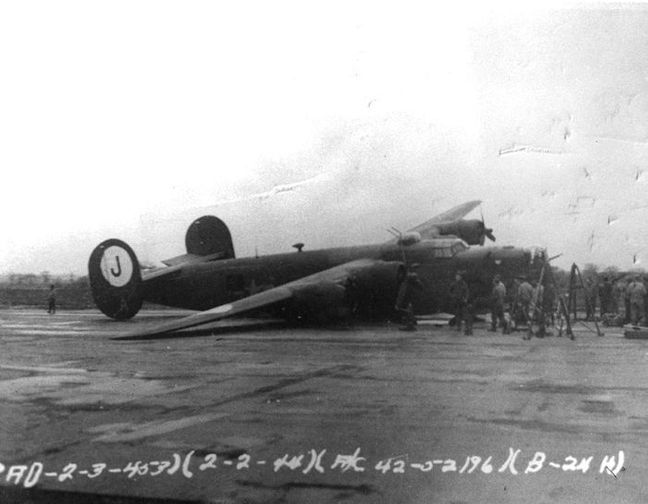
The first pilot of ‘’War Bride’’ was the 22-year-old junior officer John B. O’Hara, commander of a 9-man crew. On Saturday, September 9, 1944, they received the task of drop cargo with weapons and equipment for ‘’Boys from the Forest’’, as they often called the guerrillas from the Norwegian resistance. The drop zone was in a place called Gullknappen, to the west of Sperillen in the municipality of Buskerud. This point is defined as D 14.2. In 12 cylindrical containers equipped with parachutes were supposed to find weapons, ammunition, hand grenades, explosives and food. The forecast predicted rain and fog, which was as good news as there was a high probability of avoiding the patrols of Germans air fighters.
At the last moment, to the crew joined sergeant John P. Morris (the gunner), who wanted to reach a complete combat mission as soon as possible. Each pilot had to take 35 combat flight to finish the service. The rest of the crew were: Delbert E. McCrary (second pilot), Lewis T. Bambick (navigator), Paul Bloomberg (bombardier), Bernard F. Gittelman (radio operator), Robert T. Finn (flight engineer), Frank G. Felthouse (armorer gunner), Norman J. McLaughlin (aerial gunner), Wesley C. Bowman (aerial gunner), Robert D. Bourquin (aerial gunner). The aircraft was designated as Crupper-5.
It is unclear what was disaster caused. Probably due to weather conditions, ice was beginning to settle on the wings, propeller and hull, increasing the weight of the aircraft. The pilot could not be able to maintain pull up the plane. Perhaps the altitude flaps were icing, bringing the plane to a lower level. Or maybe O’Hara decided to lower the flight, wanting to find an area with warmer air to get rid of the ice from the wings. It could have been higher for this purpose but considering the lack of oxygen installations needed at higher levels it would be equally risky. It is also possible that the instruments failed, which, in combination with poor visibility, could lead to disaster. We probably never get to know the truth.
When between 8 and 9 pm in the evening the Crupper-5 flew into the mount of Skorve, the powerful noise and flash accompanying the explosion alerted the surrounding inhabitants. The entire 11-seater crew was killed in the disaster. They were buried in a collective grave near the place where they died. The equipment that were supposed to be dropped for the guerrillas were confiscated by Germany.
An interesting fact is that just a month later on the slope of the neighboring mountain (Hestenutan), another plane shattered. This time it was a German passenger plane Junkers Ju52-3m with 12 passengers and 3 crew members. Everyone died at place.
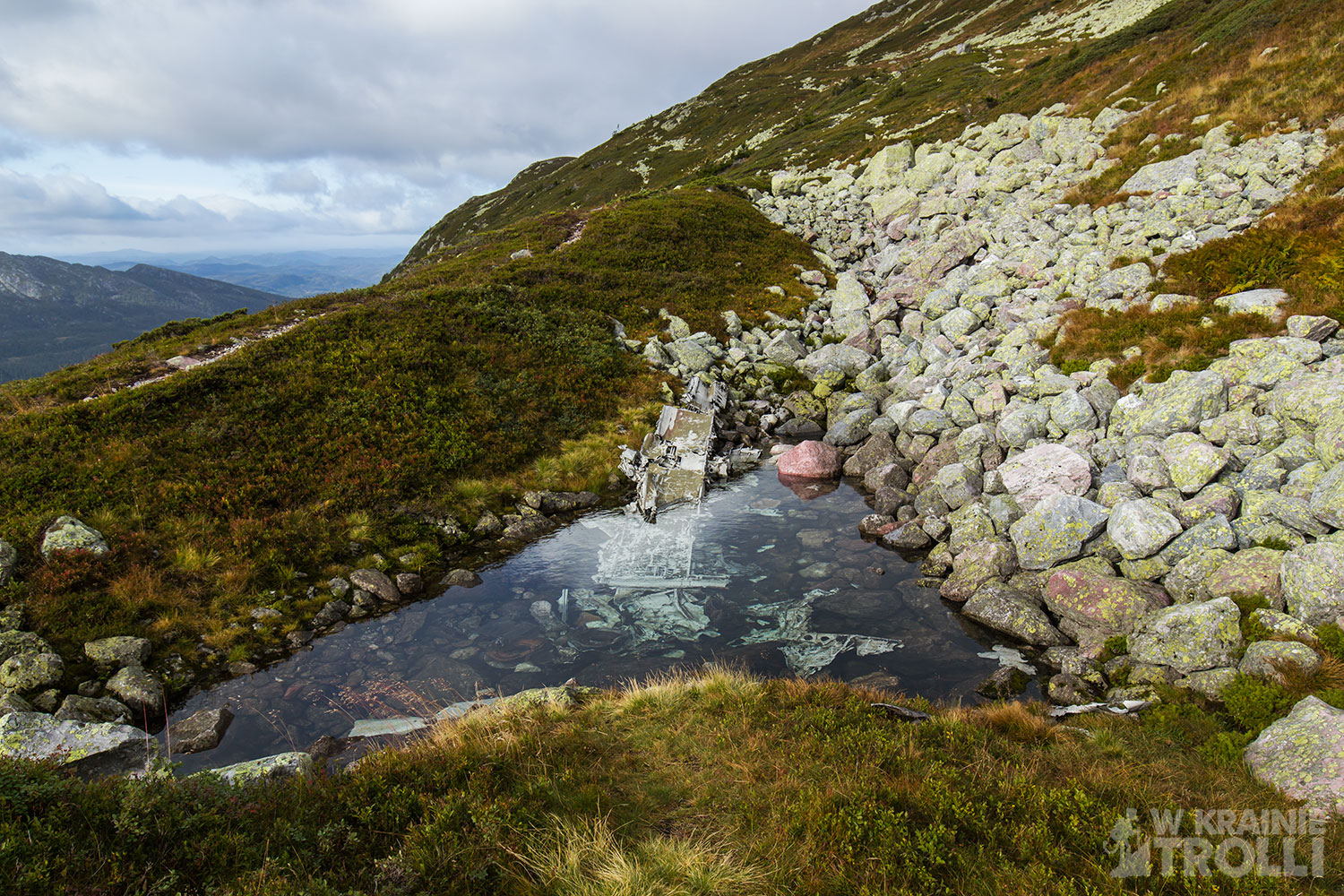


After the war, the crew were moved to the war cemetery „Neuville-en-Condroz” in Belgium. In 1950, they returned to their homeland, where they were buried at the Jefferson Barracks National War Cemetery in St. Louis, Missouri.
In 1994, a memorial was erected at Granvin Kulturhus in Seljord center to commemorate the crew that perished in the accident. Right near the place of the accident at Skorve, a memorial plaque has been placed in honor of the 11 American airmen who lost their lives here. On the plaque is a poem by Aslaug Høydal:
Rest in peace on the Norwegian soil.
Rest in peace, which heals the heather.
Rest in peace in Mosamyr.
Rest in peace until dawn.
Źródło / Source:
Flystyrten_ved_Skorve_i_1944_(Liberator)
technical-annex-c-the-modified-liberators/
carpetbaggers-the-air-arm-of-the-oss-in-europe/
featured/soldiers-last-flight-to-telemark/


